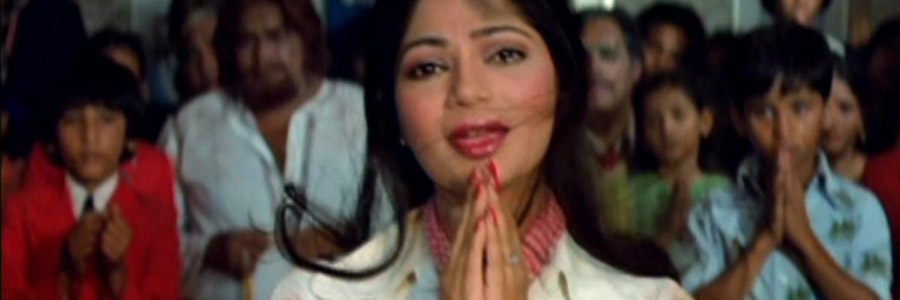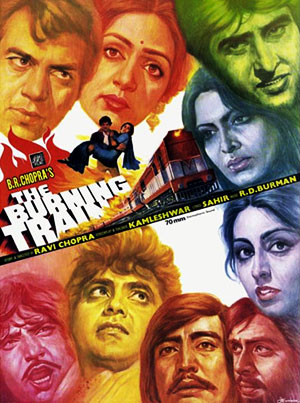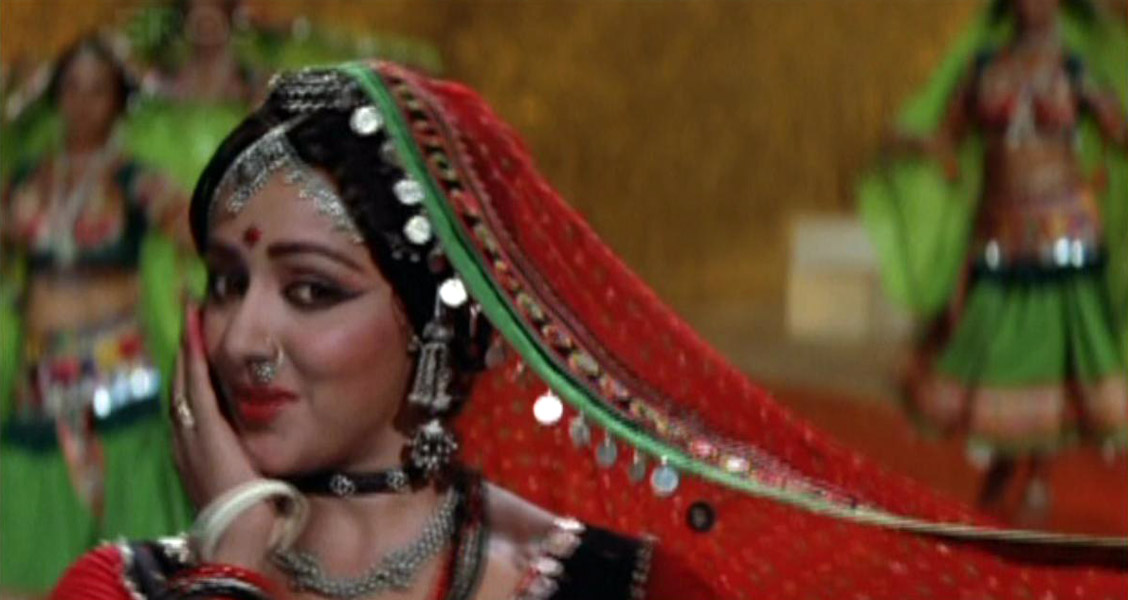
The Burning Train

THE BURNING TRAIN (MOVIE)
Yash Raj Films
Original release: March 20th, 1980
Running time: 177 minutes
Country of origin: India
Original language: Hindi
Director: Ravi Chopra
Cast: Vinod Khanna, Dharmendra,, Hema Malini, Parveen Babi, Neetu Singh, Simi Garewal, Asha Sachdev, Jeetendra
Hollywood, since as far back as the early days if cinema, has bombarded moviegoers with scenes of total destruction and chaos with that genre of films we’ve come to know and love as “the disaster film”.
This 1980 film, directed by Ravi Chopra, is a look at how Indian cinema approached the genre while weaving together a very intricate plot involving a wide cast of characters. And it does it all with a steady stream of musical numbers.
Its main characters are Ashok (Dharmendra) and Vinod (Vinod Khanna) who have been best friends with Rakesh (Vinod Mehra) and Randhir (Danny Denzongpa) since childhood. Ashok is passionate about cars while Vinod has a passion for trains. As an employee for Indian Railways he gets his chance to build India’s Super Fast Express, but this angers his jealous friend, Randhir, who vows revenge.

Around the same time, Asok and Vinond meet the women of their dreams, Sheetal (Parveen Babi) and Seema (Hema Malini) and fall in love with them.
Six years later, when building of the train is complete and it’s ready for its inaugural run from New Delhi to Bombay, packed with passengers, including Vinod’s young son, Raju, disaster strikes.
The Burning Train maintains all of those qualities we recognise in Indian films from that time; feuding families, the rich/poor divide, the tragic love story, the machismo action and a devotional element that speaks to the heart of India’s Hindu population, together with a handful of beautiful and memorable musical numbers.
When we meet Sheetal and Seema for the first time, it’s with the song Meri Nazar Hai Tujh Pe. It’s a colourful and lively sequence with Hema dressed in traditional garments which contrasts with the contemporary  look Parveen projects with her bright red dress. Similarly, the path of both characters reflect how they appear in this sequence.
look Parveen projects with her bright red dress. Similarly, the path of both characters reflect how they appear in this sequence.
The passengers on the train that we’re introduced to each bring with them a story which adds a lot to what’s already going on, but it gives The Burning Train a lot of fuel to run on. Among there are a Hindu priest, a king and his wife, a jewel smuggler, an undercover police officer, a teacher with a group of children and Ashok who runs into Seema for the first time after not seeing her for many years.
Later on, as the journey begins, Pal Do Pal Ka Saath Humara is a joyous and celebratory number with Asha Sachdev, Neetu Singh and Jeetendra leading the way with the passengers soon joining in, piling in from the other carriages to see what’s going on.  It’s a standout moment in the film that soon gets you clapping to the swaying beat of the qawaali style song.
It’s a standout moment in the film that soon gets you clapping to the swaying beat of the qawaali style song.
Once it becomes apparent that a bomb has exploded on the train, things of course take a different turn.
With Vinod racing to catch up with the train and everyone else certain that it will end in disaster, he must not only save his son, but stop the train from crashing in Bombay where it might kill many others. Teri Hai Zameen Tera Aasman is a tearful song as the teacher and children pray for mercy while this is all taking place.
The Burning Train, with its emphasis on telling an affecting story amidst disaster, is like many great Indian films of its time. It manages to take you through a spectrum of emotions and should leave you feeling emotionally and physically exhausted by the end.
I cried, laughed, cheered and wanted to strangle its cartoonish villain at regular intervals, but instead feeling drained I was left feeling refreshed and very satisfied with its overall story.

Patrick Samuel
The founder of Static Mass Emporium and one of its Editors in Chief is an emerging artist with a philosophy degree, working primarily with pastels and graphite pencils, but he also enjoys experimenting with water colours, acrylics, glass and oil paints.
Being on the autistic spectrum with Asperger’s Syndrome, he is stimulated by bold, contrasting colours, intricate details, multiple textures, and varying shades of light and dark. Patrick's work extends to sound and video, and when not drawing or painting, he can be found working on projects he shares online with his followers.
Patrick returned to drawing and painting after a prolonged break in December 2016 as part of his daily art therapy, and is now making the transition to being a full-time artist. As a spokesperson for autism awareness, he also gives talks and presentations on the benefits of creative therapy.
Static Mass is where he lives his passion for film and writing about it. A fan of film classics, documentaries and science fiction, Patrick prefers films with an impeccable way of storytelling that reflect on the human condition.
© 2022 STATIC MASS EMPORIUM . All Rights Reserved. Powered by METATEMPUS | creative.timeless.personal. | DISCLAIMER, TERMS & CONDITIONS
HOME | ABOUT | CONTACT | TWITTER | GOOGLE+ | FACEBOOK | TUMBLR | YOUTUBE | RSS FEED
CINEMA REVIEWS | BLU-RAY & DVD | THE EMPORIUM | DOCUMENTARIES | WORLD CINEMA | CULT MOVIES | INDIAN CINEMA | EARLY CINEMA
MOVIE CLASSICS | DECONSTRUCTING CINEMA | SOUNDTRACKS | INTERVIEWS | THE DIRECTOR’S CHAIR | JAPANESE CINEMA





